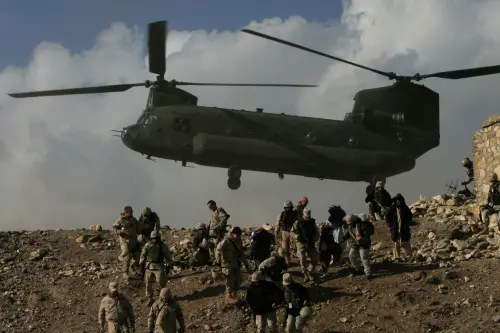The conflict in Libya, as with conflicts everywhere, is displacing large numbers of people. Around 350,000 people have fled Libya in the past month – most of them migrant workers seeking to escape the violence. But Libya, with a population of 6.5 million, has 2.5 million migrant workers. How many more will leave – or try to leave – as the conflict continues?
So far, most of those who have left are Tunisians and Egyptians trying to get home. But there are other groups of people trying to escape, including large numbers of Asian and African migrants who need to be transported back to their countries of origin. African migrants in particular have reported being attacked by Libyans who see them as mercenaries supporting the Qaddafi regime. Some 5,000 African migrants have crossed into Niger; they have told international officials that there are many more Africans desperate to leave but who need transport to get out of the country. In addition, there are – or were – some 8,000 refugees living in Libya and another 3,000 who were in the process of seeking refugee status. These are people who cannot go home even if they manage to get out of Libya. The international humanitarian system has responded efficiently in pre-positioning supplies in neighboring countries and in moving these initial waves of migrant workers back home. But in the longer term, the return of large numbers of migrant workers will pose significant difficulties for their countries of origin as the remittances they send home dry up. And in the case of Egypt, the possibility that most of the 1 million or so Egyptian migrants working in Libya will return could create more pressure on a fragile process of transition.
The situation on Libya’s borders is serious, but the situation inside the country could be far worse. Concrete information about humanitarian conditions inside Libya is lacking although there are reports of civilian casualties, shortages of food and disruption of services and hospitals running short on medical supplies. International humanitarian agencies, which left Libya in February, are trying to figure out how to provide assistance inside the country and planning shipments of relief items to the eastern part of the country. They are also calling for the establishment of humanitarian corridors to allow for the distribution of needed supplies. But for the international humanitarian agencies to return, security guarantees are needed from the Qaddafi regime. Not surprisingly given the UN Security Council’s resolutions, these security guarantees have not been forthcoming.
Unconfirmed reports from international humanitarian actors are beginning to surface that tens of thousands of Libyans have left their homes in search of safety. UNHCR reports that these internally displaced persons (IDPs) are camped out in schools or living with family members or friends. Although there are no reliable estimates of their number or their intentions, it seems likely many they are keeping their heads down, watching the situation and planning their next moves if the situation worsens. While we don’t have concrete information on humanitarian conditions inside Libya, we do know that when civil conflict rages, people are displaced from their communities. They try to escape violence by moving, often first within the country’s borders as internally displaced persons. Then, if they can’t find safety or assistance, they try to move on. If people do leave Libya, where will they go? If they come in large numbers, will they be allowed to enter and remain in Tunisia and Egypt? Or will they try to move further afield?
The reaction in Europe is one of fierce determination to stop a potential flow of refugees and migrants into their territories. Boats carrying North Africans have been refused permission to dock in Malta and Italy. In fact, the crisis in Libya has provoked an almost hysterical reaction by the Italian government, with foreign minister Franco Frattini stating that Italy expects “a wave of 200,000 to 300,000 immigrants” from Libya. So far this year some 15,000 North Africans have landed on Lampedusa, the small Italian island located only 70 miles from Tunisia. The French have called on the Italian government to act responsibly – and prevent the migrants from moving out of Italy into, say, France. The prospects of large-scale migration of Libyans and migrants who worked in Libya is perceived as a security issue in Europe.
While attention is focused on the skies over Libya and on the battles raging in Libyan cities, a serious humanitarian emergency has developed. While the emergency on Libya’s borders is more visible, the humanitarian crisis inside the country is probably the one to watch.
The Brookings Institution is committed to quality, independence, and impact.
We are supported by a diverse array of funders. In line with our values and policies, each Brookings publication represents the sole views of its author(s).



Commentary
Libya: The Humanitarian Emergency We See and the One We Don’t
March 25, 2011